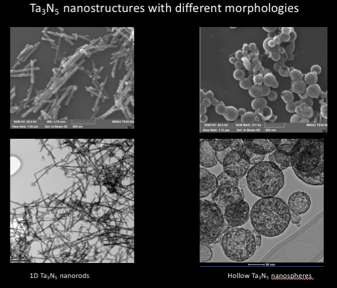Synthesis Of Metal Oxide And Nitride Hollow Nano And Microspheres With Tunable Particle Size, Crystallinity, Porosity For Energy And Env. Applications
Full Description
Background
New water treatment technologies need to be developed that will not only remove contaminant compounds and industrial pollutants but degrade them to non-harmful constituents. Although water purification technologies exist they each have drawbacks including the inability to remove all classes of organics, nitrates, etc. For example, chlorination, used as an oxidant, could also produce chlorinated by-products that could be more dangerous than the original contaminant. Chlorination is also not effective against certain bacteria. Carbon is known to absorb the contaminants but does not degrade them. Polymer based membranes while effective does need significant maintenance thereby causing reduction in lifetime as well as increased downtime.
Photocatalysis provides an efficient path to oxidize organic compounds – the most common photocatalyst material being Titanium Dioxide (TiO2). The challenges with TiO2 are:
- Requires UV activation and therefore ineffective if sunlight is used as the UV source.
- TiO2 has lower surface area limiting the efficiency of radical formation.
Current Invention
Prof. David Kisailus and his team have developed a novel, high surface area photocatalyst – Tantalum Nitride(Ta3N5) hollow nano or microspheres. The associated process enables the formation of tunable sized, high surface area that consist of oriented nanoparticles on the periphery of the spheres.

Schematic illustration of the two-step synthesis of Ta3N5 hollow nanospheres

Ta3N5 nanostructures with different morphologies including nanorods.
Advantages
The significant benefits of this patent pending technology are:
Suggested uses
- Water purification
- Catalyze the formation of hydrogen from water.
Related Materials
Patent Status
| Country | Type | Number | Dated | Case |
| United States Of America | Issued Patent | 11,623,211 | 04/11/2023 | 2018-555 |
Contact
- Venkata S. Krishnamurty
- venkata.krishnamurty@ucr.edu
- tel: View Phone Number.
Other Information
Keywords
Nanoparticles, Tantalum Nitride, Ta3N5, Photocatalysis, Water purification, Hydrogen generation, Water splitting
